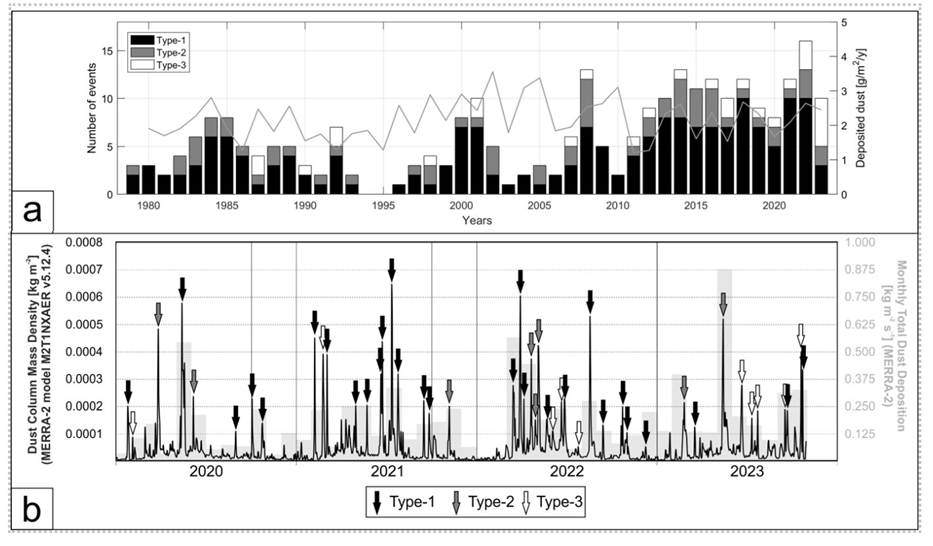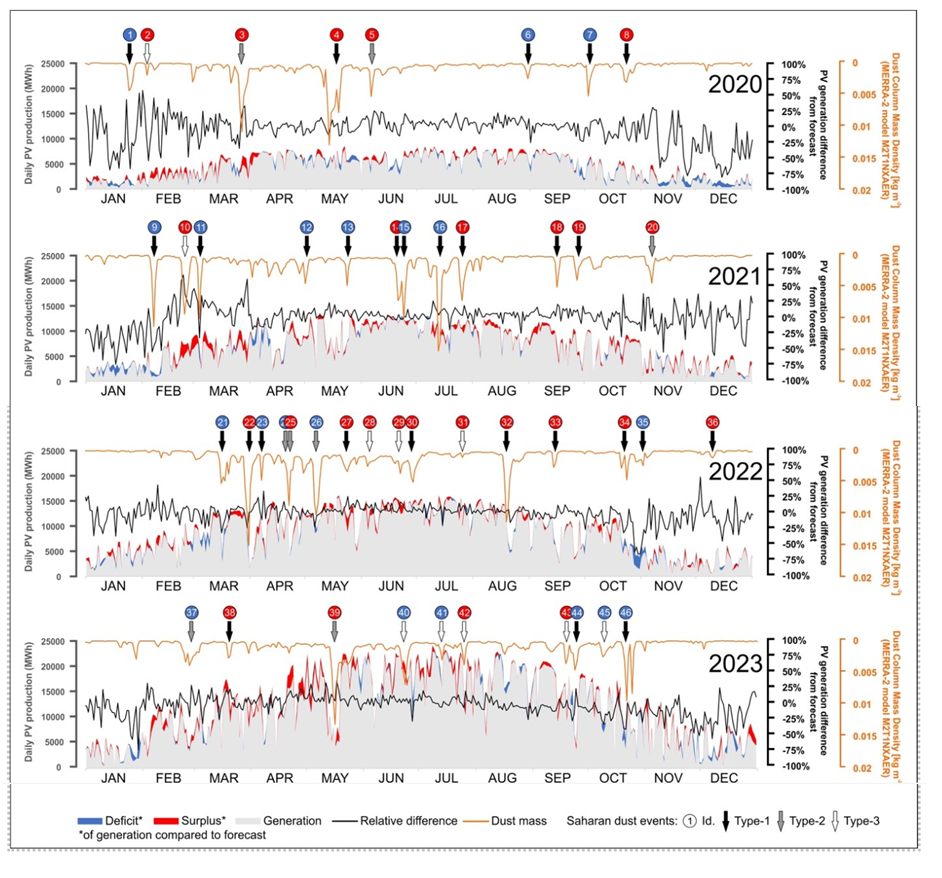Saharan Dust Storms Could Impact Solar Energy Production in Hungary
Saharan dust storms are reaching Hungary more frequently and in larger numbers. Beyond the deterioration of air quality, there are other areas where it is crucial to incorporate the effects of these dust storms into analyses and forecasts. Researchers from the HUN-REN Research Centre for Astronomy and Earth Sciences, in collaboration with Pannon University, have studied the impact of Saharan dust storms on solar energy production in Hungary and the accuracy of energy generation forecasts. Their findings provide important insights into the functioning of forecasting systems.
According to the researchers, this issue is significant from multiple perspectives. Firstly, with the global expansion of solar energy production, it is crucial to address the uncertainties of weather-dependent renewable energy sources. Additionally, the increasing frequency of Saharan dust storms must be examined, as they directly impact energy generation and play a key role in the regional variability of solar radiation conditions.

a: Changes in the frequency of Saharan dust storm events in Hungary (1979–2023). b: Daily atmospheric dust production from MERRA-2 and the monthly deposition data of identified dust storms between 2020 and 2023.
To better understand the impact of dust storms and integrate them into solar energy production planning, researchers analyzed 46 identified Saharan dust storms from the 2020–2023 period and drew key conclusions. They emphasize that since atmospheric dust particles have both direct and indirect effects on solar energy generation, maintaining a continuous balance between production and consumption requires, above all, accurate forecasting systems.

Dust transport routes of Saharan dust storms reaching Hungary annually between 2020 and 2023
“The main challenge is that the role of atmospheric dust in the overall radiation balance is difficult to quantify in advance,” explain the researchers. Each dust cloud contains a variety of materials - such as quartz, calcite, gypsum, clay minerals, and mica - as well as individual mineral particles and aggregates of different shapes, each with distinct optical properties. Darker-colored particles (e.g., hematite, goethite) absorb more radiation, creating local heating effects. Lighter-colored particles primarily contribute to temperature reduction through reflection (e.g., salt crystals) and scattering (e.g., quartz).
Fine atmospheric dust particles can act as condensation nuclei in the atmosphere, which are essential for cloud formation, as cloud droplets cannot form without them. An increase in the number of condensation nuclei, given a constant water vapor content, results in more but smaller cloud droplets. This makes the clouds appear brighter, leading to greater reflection of solar radiation. Another characteristic of smaller cloud droplets is their longer atmospheric residence time. As a result, the radiative effect of the clouds - meaning their impact on the Earth's radiation balance - lasts longer. Additionally, a higher number of smaller droplets reduces the likelihood of precipitation, meaning that rainfall is less likely to wash dust off solar panels.
The researchers emphasize that accurate forecasting requires incorporating up-to-date dust load data and appropriate cloud physics correlations into calculations. Due to climate change and the natural variability of the climate system, forecasts are made within an unstable hydrometeorological and atmospheric system, which inherently carries uncertainties. As solar power capacity increases, these forecasting errors are likely to become more significant. To mitigate their impact, researchers suggest not only improving forecasting accuracy but also expanding electricity storage capacity.

Daily photovoltaic electricity production, day-ahead forecasts, forecasting errors, atmospheric dust load, and identified dust storm events in Hungary (2020–2023).
A fundamental issue is that dust storms reduce solar radiation, which directly leads to lower energy production. Understanding and accurately predicting the extent of this impact is crucial not only for energy supply security but also for economic reasons.
The researchers point out that current models fail to account for many parameters or miscalculate certain processes. Additionally, historical data is becoming increasingly unreliable due to the ongoing effects of climate change. If solar radiation is lower than expected due to dust storms, less electricity will be generated than grid operators anticipated. While the shortfall can typically be compensated for by quick-start gas turbine power plants, researchers explain that this solution is highly costly and leads to additional greenhouse gas emissions.
"A single dust storm can cause power losses of several hundred megawatts, sometimes even up to 1 gigawatt. However, this is not only due to the dust itself but also because of the cloud cover of the meteorological conditions that lead to dust storms," explains György Varga, a researcher at the HUN-REN Research Centre for Astronomy and Earth Sciences, Institute of Geography. "The atmospheric dust alters the properties of these clouds, leading to an even larger cloud cover. These weather conditions are among the hardest to predict accurately in energy scheduling. The lowest solar energy production typically occurs during winter inversion periods. While the radiation-reducing effect of dust storms is less severe in comparison, it is still significant. What makes this issue particularly concerning is that climate change is expected to increase the frequency of dust events in the future."

